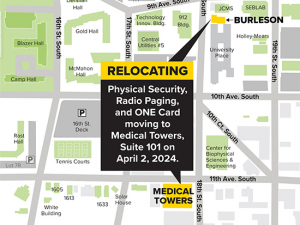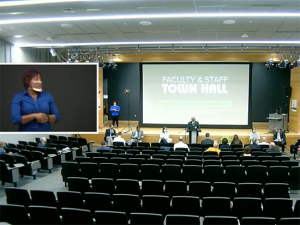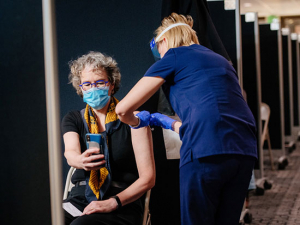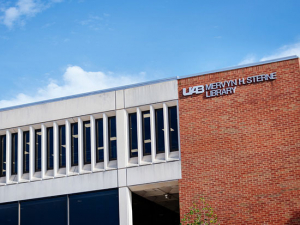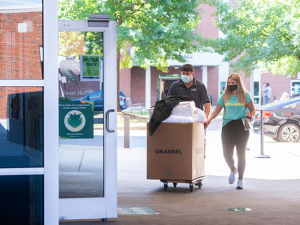HR VIVA CHOICE from uabnews on Vimeo.
One benefit option will enable employees to choose to pay lower monthly premiums in exchange for higher out-of-pocket expenses for all covered services — up to an established maximum.
| Information about benefit options are being provided during the next several weeks to better enable you to make the best choices for your household. Previous: Five things to know about open enrollment BCBS selected to provide dental coverage UAB to expand vision benefits with premium coverage option Next: Traditional health care plans |
Viva Choice — UAB’s consumer-driven health plan (CDHP) — will be an option in addition to traditional Viva and Blue Cross health care plans offered to eligible employees of UAB, UAB Hospital and UAB Hospital Management LLC during the annual open enrollment for benefits Oct. 27-Nov.13. Viva Choice will provide access to all participating Viva Health providers.
The CDHP was offered this past year for the first time, and the over 800 employees who selected this option surpassed expectations, said UAB Benefits Director Mike Boyd.
“About 6 percent of eligible employees enrolled in Viva Choice for 2017, which was higher than we expected for a first-time offering of a product that was a new way of purchasing health care for consumers,” Boyd said. “We had to intervene to help a handful of people access their health savings accounts early in January, but other than that, we’ve had no complaints.”
What is a CDHP?
A consumer-driven health plan provides the same coverage as the traditional health care plans. What is different is how — and how much — you may pay for it.
A CDHP, in this instance Viva Choice, is paired with an HSA — a health savings account (HSA) — that enables you to set aside pre-tax via payroll or after-tax dollars to pay for qualified, out-of-pocket medical expenses.
In exchange for lower monthly premiums, people with CDHPs pay higher out-of-pocket expenses until they reach an annual deductible. For Viva Choice, the annual deductible is $1,350 for single coverage and $2,700 aggregate for a family.
All qualified medical expenses — doctor visits, medical tests and prescriptions — count toward the deductible. Once the deductible is met, Viva Choice begins paying 90 percent of claims up to the overall out-of-pocket maximum ($3,500 for single coverage and $7,000 for a family). Once the out-of-pocket maximum is reached, the plan pays 100 percent of claims for the remainder of the calendar year.
These out-of-pocket expenses can be paid through pre-tax funds you invest in an HSA account.
How does an HSA work?

For years UAB employees have been able to opt for flexible spending accounts (FSA) to help pay for medical expenses. With an FSA, you can set aside up to $2,600 per year, and any FSA funds you do not spend by the year’s end are forfeited.
HSAs are employee-owned accounts that can be used for qualified medical expenses now or saved for long-term expenses. If you enroll in Viva Choice, you will be enrolled automatically in an HSA, and you will be ineligible to contribute to a health care FSA. (You will continue to be eligible for the dependent care FSA plan.)
Like an FSA, your HSAs funds can be accessed using a debit card provided for the account or by submitting a reimbursement claim form. But, it differs from an FSA in several important ways:
-
You can set aside more for expenses. For an HSA, the amount of pre-tax dollars you can set aside for 2017 is $3,450 for single coverage and $6,900 for families.
-
You can save for the future. All the money you invest is yours — always — even if you don't spend it all this year. Balances carry over year to year — and earn interest, and the funds are available to spend on any qualified medical expense when they arise.
-
You can take it with you. Even if you retire or go to another employer, the funds in your HSA account belong to you. They can be used or saved to pay for long-term retirement expenses, including Medicare premiums or nursing home care.
-
UAB contributes to your HSA. This year, UAB will fund the first $400 for single coverage and $800 for non-single coverage for employee’s enrolling during annual open enrollment; that is yours to use whether you invest additional funds or not.
-
You can decide to invest more at any time. FSA contributions can only be made through payroll-deduction and the amount is set during open enrollment. With HSAs, employees can contribute up to IRS limit either with pre-tax dollars through payroll deduction or with after-tax dollars at any time during the year.
How does this fit together?
Let’s say you’re single and you go mountain climbing and slip and break your arm. An ambulance picks you up and carries you to the doctor, who X-rays and sets your arm and gives you a prescription for medication and rehab. Let’s say the cost of all this is about $5,000.
| Ounce of prevention All UAB plans, including Viva Choice, cover preventive care at 100 percent, with no deductible for physicals, immunizations, routine screenings and preventive generic prescriptions. |
With VIVA Choice, you pay all expenses up to the annual deductible — $1,350 — and your insurance kicks in for 90 percent of the $3,650 in remaining expenses — or $3,285. Leaving you to pay a total of $1,715, which you can pay out of your own pocket or from funds available in your HSA account.
More detailed information about VIVA Choice and health savings accounts is available for you in the Open Enrollment toolkit in the UAB for Me portal at www.uab.edu/hrintouch.




